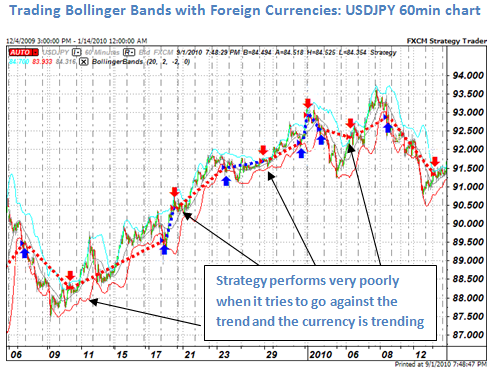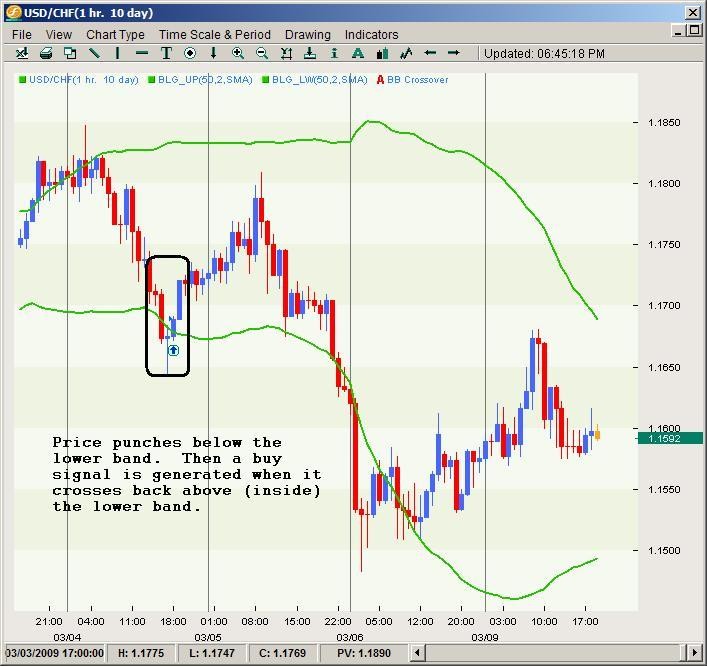Bollinger bands strategies
Post on: 16 Март, 2015 No Comment

The Bollinger Band theory is designed to depict the volatility of a stock. It is quite simple, being composed of a simple moving average, and its upper and lower bands that are 2 standard deviations away. Standard deviations are a statistical tool used to contain the majority of movement or deviation around an average value. Bear in mind that when you use the Bollinger Band theory, it only works as a gauge or guide, and should be use with other indicators.
Normally, we use the 20-Day simple moving average and its standard deviations to create Bollinger Bands. Strategies some investors use include shorter- or longer-term Bollinger Bands depending on their needs. Shorter-term Bollinger Bands strategies (less than 20-Days) are more sensitive to price fluctuations, while longer-term Bollinger Bands (more than 20-Days) are more conservative.
So how do we use the Bollinger Band theory?
The Bollinger Band theory will not indicate exactly which point to buy or sell an option or stock. It is meant to be used as a guide (or band) with which to gauge a stock’s volatility.
When a stock’s price is very volatile, the Bollinger Bands will be far apart. In the chart below, these periods can be seen in early March, mid April and mid May. On the other hand, when there is little price fluctuation, hence low volatility, the Bollinger Bands will be in a tight range. This can be seen in the circled sections in February, late March and late June.
The Bollinger Band theory provide indicators to measure the volatility of a stock price. It is derived from a simple moving average and its standard deviations. Wide bands indicate volatile conditions. while narrow bands indicate stable conditions .
As for how we use the Bollinger Band theory, here are a couple of guidelines.

History shows that a stock usually doesn’t stay in a narrow trading range for long, as can be gauged using the Bollinger Bands. Strategies include relating the width with the length of the bands. The narrower the bands, the shorter the time it will last. Therefore, when a stock starts to trade within narrow Bollinger Bands, such as in the circled sections in the chart, we know that there will be a substantial price fluctuation in the near future. However, we do not know which direction the stock will move, hence the need to use Bollinger Bands strategies together with other technical indicators.
When the stock starts to become very volatile, it is depicted in the chart above by the actual stock price hugging either the upper or lower Bollinger Bands, with the Bands widening substantially. The wider the Bands are, the more volatile the price is, and the more likely the price will fall back towards the moving average.
When the actual stock price moves away from the Bands back towards the moving average, it can be taken as a signal that the price trend has slowed, and will move back towards the moving average. However, it is common for the price to bounce off the Bands a second time before a confirmed move towards the moving average.
The longer a Bollinger Band remains narrow. the more likely a sudden price movement will occur. The wider a Bollinger Band becomes. the more likely the price will move back towards the moving average .














